
Seyfert's Sextet is a group of galaxies about 190 million light-years away in the constellation Serpens. The group appears to contain six members, but one of the galaxies, NGC 6027d, is a background object and another "galaxy," NGC 6027e, is actually a part of the tail from galaxy NGC 6027. The gravitational interaction among these galaxies should continue for hundreds of millions of years. Ultimately, the galaxies will merge to form a single giant elliptical galaxy.

NGC 2 is an intermediate spiral galaxy with the morphological type of Sab, located in the constellation of Pegasus. NGC 2 was discovered by Lawrence Parsons, 4th Earl of Rosse on 20 August 1873."
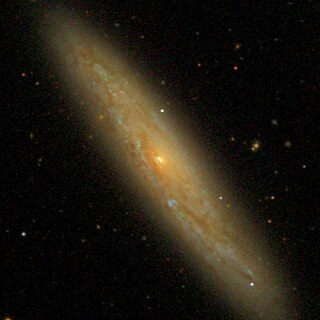
NGC 3877 is a type Sc spiral galaxy that was discovered by William Herschel on February 5, 1788. It is located below the magnitude 3.7 star Chi Ursae Majoris in Ursa Major.

NGC 6744 is an intermediate spiral galaxy about 30 million light-years away in the constellation Pavo (Peacock). It is considered as a Milky Way mimic in the immediate vicinity, displaying flocculent (fluffy) arms and an elongated core. It also has at least one distorted companion galaxy superficially similar to one of the Magellanic Clouds. It was discovered from Parramatta in Australia by Scottish astronomer James Dunlop on 30 June 1826.

The Atlas of Peculiar Galaxies is a catalog of peculiar galaxies produced by Halton Arp in 1966. A total of 338 galaxies are presented in the atlas, which was originally published in 1966 by the California Institute of Technology. The primary goal of the catalog was to present photographs of examples of the different kinds of peculiar structures found among galaxies.
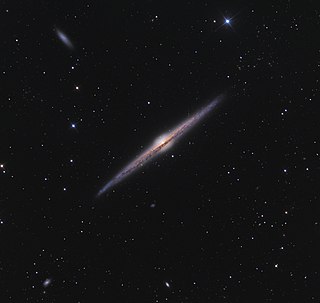
NGC 4565 is an edge-on spiral galaxy about 30 to 50 million light-years away in the constellation Coma Berenices. It lies close to the North Galactic Pole and has a visual magnitude of approximately 10. It is known as the Needle Galaxy for its narrow profile. First recorded in 1785 by William Herschel, it is a prominent example of an edge-on spiral galaxy.

NGC 5101 is a lenticular galaxy in the constellation Hydra. It is separated in the sky from the spiral galaxy NGC 5078 by about 0.5 degrees, and both are believed to be at the same distance from the Earth. This would mean they are approximately 800,000 light-years apart. Both galaxies are believed to be about the size of the Milky Way.

NGC 5112 is a barred spiral galaxy in the constellation Canes Venatici. This galaxy is in close physical proximity to the edge-on dwarf spiral NGC 5107.
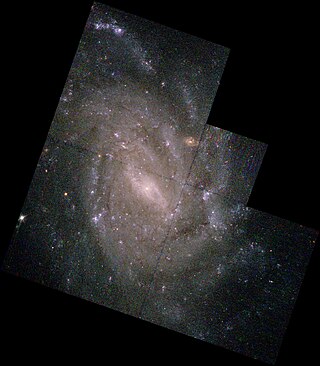
NGC 5334 is a face-on spiral galaxy in the constellation Virgo. It is a member of the Virgo III Groups, a series of galaxies and galaxy clusters strung out to the east of the Virgo Supercluster of galaxies.
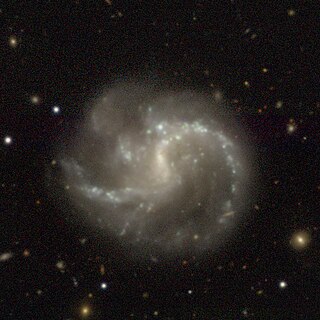
NGC 145, also known as Arp 19, is a barred spiral galaxy in Cetus, notable for its three spiral arms.

NGC 7 is a barred spiral galaxy located in the Sculptor constellation. It was discovered by English astronomer John Herschel in 1834, who was using an 18.7 inch reflector telescope at the time. Astronomer Steve Gottlieb described the galaxy as faint, albeit large, and edge-on from the perspective of the Milky Way; he also noted how the galaxy could only be observed clearly with peripheral vision, not by looking directly at it.

NGC 14 is an irregular galaxy in the Pegasus constellation. It was included in Halton Arp's Atlas of Peculiar Galaxies, under the section "Galaxies with the appearance of fission," since the irregular appearance of this galaxy causes it to look like it is coming apart. It was discovered on September 18, 1786, by William Herschel.
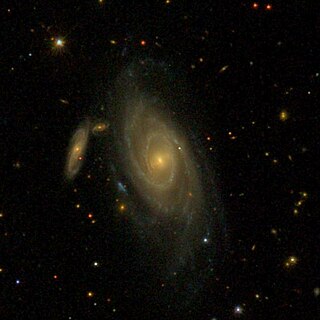
NGC 36 is a barred spiral galaxy in the constellation Pisces. It is located about 221 million light-years away. It was discovered in October 25, 1785, by the astronomer William Herschel.

NGC 4540 is a spiral galaxy with type 1 Seyfert activity located about 64 million light-years away in the constellation Coma Berenices. NGC 4540 was discovered by astronomer William Herschel on March 21, 1784 and is a member of the Virgo Cluster.

NGC 4659 is a lenticular galaxy located about 54 million light-years away in the constellation Coma Berenices. NGC 4659 was discovered by astronomer William Herschel on April 12, 1784 and is a member of the Virgo Cluster.

NGC 3305 is an elliptical galaxy located about 190 million light-years away in the constellation Hydra. The galaxy was discovered by astronomer John Herschel on March 24, 1835. NGC 3305 is a member of the Hydra Cluster.
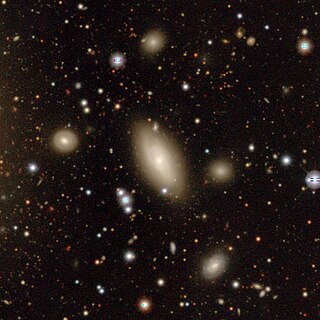
NGC 3307 is a lenticular galaxy located about 185 million light-years away in the constellation Hydra. The galaxy was discovered by astronomer John Herschel on March 22, 1836 and is a member of the Hydra Cluster.
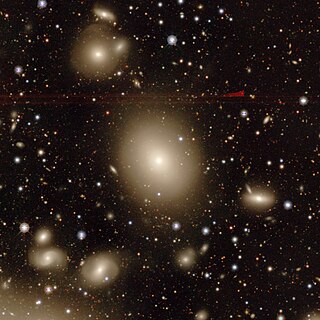
NGC 3308 is a lenticular galaxy with a faint bar located about 174 million light-years away in the constellation Hydra. NGC 3308 was discovered by astronomer John Herschel on March 24, 1835. It is a member of the Hydra Cluster.

NGC 721 is a barred spiral galaxy located in the constellation Andromeda about 250 million light years from the Milky Way. It was discovered by the Prussian astronomer Heinrich d'Arrest in 1862.

NGC 713 is a spiral galaxy located in the constellation of Cetus about 234 million light years from the Milky Way. It was discovered by the American astronomer Francis Leavenworth in 1886.





















